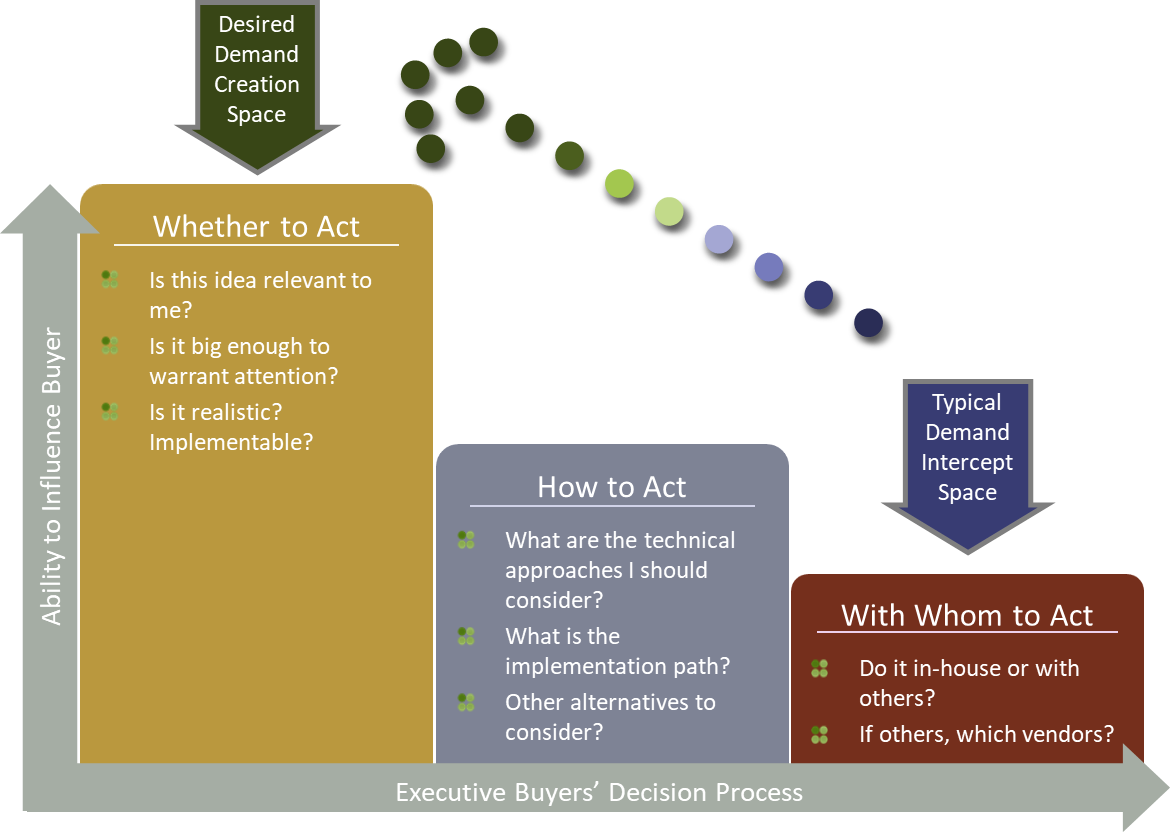This blog is part of a series on Leading with Ideas. To read the first blog in the series, click here .
In the last post, we mentioned that Ideas align with the way real decisions are made – instead of working against the process. Any purchase decision has these three sequential components:
1) Whether to Act – This stage is all about deciding if something should be done. Is it worth investigating this opportunity or issue(s)? Only when this is decided does How to Act come clearly into view,
2) How to Act – How can this be done – What are the alternatives? Where are the risks? What’s the game plan? The stage is fruitful with analysis of how to get things done. Then and only then will does the last decision come in,
3) With Whom to Act – Can I do this alone, do I need help, who can I trust, etc. This is about selecting partners for the implementation. If you have assisted, even advised, in Whether to Act and How to Act, then you are the obvious partner for With Whom to Act.

How often have you been involved in a sales situation where all the discussion is about With Whom to Act – our product is better, cheaper, etc.? For most companies, the answer is “all too often” coupled with:
- “They seemed to have another competitor in mind the whole time and we lost the deal” – likely that competitor was in the demand generation conversation with the buyer
- “We had to give major discounts to win the deal/keep from losing the customer” – likely the buyer simply went out to the market to gain price leverage over an incumbent provider
Also, long sales cycles are often caused by selling to the With Whom to Act Question when the client is still deciding Whether to Act. By shifting the focus on the conversation to Whether to Act, it is much easier to guide the client through the entire executive buyers’ decision process, and you will likely gain valuable intelligence about the competitive situation.
The importance of moving earlier in the buying cycle is paramount – the true value (the opportunity to provide insight and advice) of the relationship is created in the Whether to Act and the How to Act stages of a decision.
Recently, Nicholas Toman, Brent Adamson, and Cristina Gomez from CEB published an excellent exploration in Harvard Business Review (https://hbr.org/2017/03/the-new-sales-imperative) of the buyer’s decision process and how a “proactive, prescriptive approach” to selling simplifies the purchase for buyers and reduces purchase regret. Ideas (coupled with Service ChainsSM) should form the basis for such a prescriptive approach.
To read the next blog in the series, click here.
Written by: Anthony Paluska
About the Author: Anthony Paluska is a Partner at McMann & Ransford with experience helping organizations overcome commoditization by developing stronger, more intimate, relationships with their customers. He has leveraged his management consulting, problem solving, and change management skills to support 15+ Fortune 1000 organizations, across a multitude of industries.
